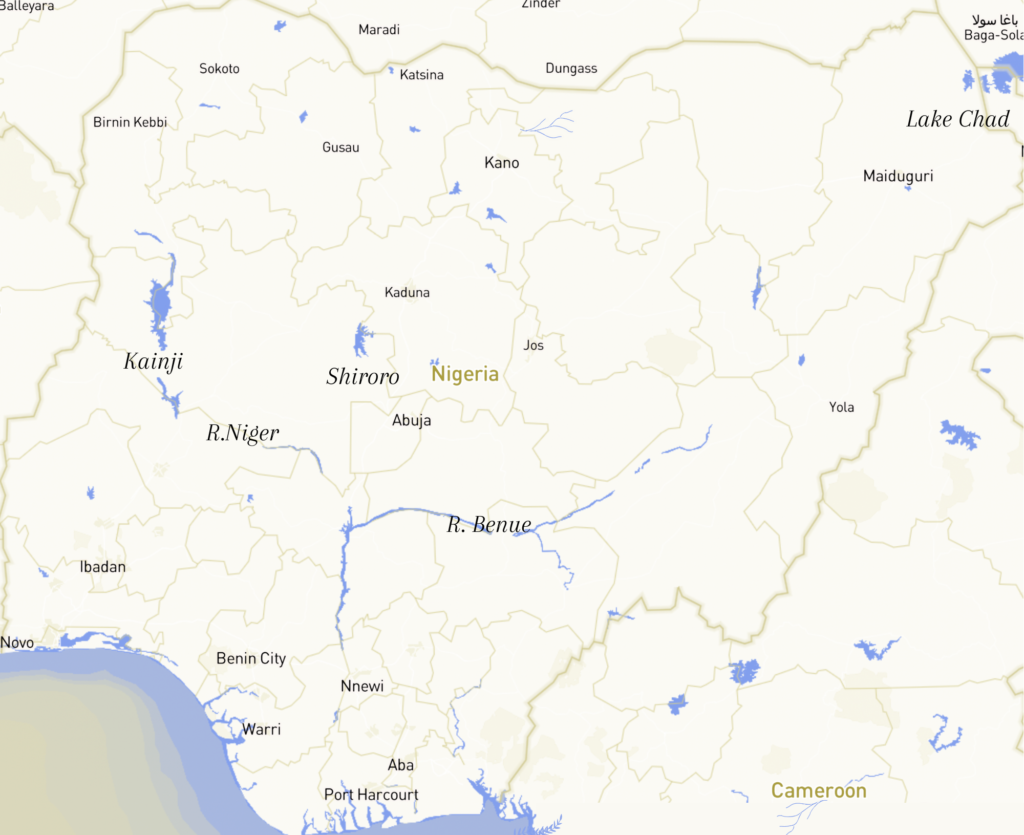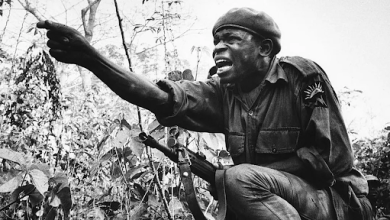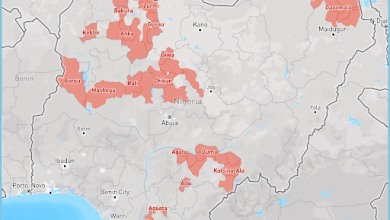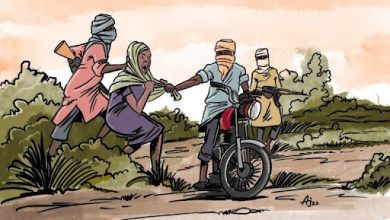Nigerians Should Brace For More Flooding In 2023, Say Government
As the rainy season begins in Nigeria, there is a significant risk of heavy flooding across the country’s 36 states and the capital territory. This will hit communities hard, as they are still recovering from last year’s floods.

Nigeria’s authorities expect intense and widespread flooding during the rainy season this year.
The warning comes as vulnerable communities are still recovering from an unprecedented flooding last year. In 2022 at least 600 people died and thousands of homes and farms were submerged across the country.
Even moderate flooding in these communities this season could make their situation much worse. The country’s environmental authorities are predicting that there will be more rain than last year.
The country’s Hydrological Services Agency (NIHSA) flood outlook released in February predicted that 178 Local Government Areas (LGAs) in 32 States and the capital territory fall within the “Highly Probable Flood Risks Areas”.
As many as 224 LGAs in 35 States, including the capital, are within the “moderately probable flood Risks Areas”. The remaining 372 LGAs were said to fall within the “probable Flood Risks Areas”.
According to the assessment, the states facing a high threat of flooding in the country’s south are Abia, Akwa Ibom, Anambra, Bayelsa, Benue, Cross-River, Delta, Ebonyi, Ekiti, Edo, Imo Ogun, Ondo, Osun, Oyo and Rivers.
In the north, the at-risk states are Adamawa, Bauchi, Gombe Jigawa, Kaduna, Kano, Kebbi, Kogi, Kwara, Lagos, Nasarawa, Niger and Sokoto.
The Minister of Water Resources, Suleiman Adamu said: “The Highly Probable Flood Risks Areas is expected between the month of April and November, adding that the level of floods in this category is expected to be high in terms of impact on the population, agriculture, livelihood, livestock and infrastructure, and the environment”.

Expected flood types
Communities across Nigeria experience floods of different forms, depending on the local geography. Some locations, such as the city of Lagos, struggle with more than one type of flooding.
The flood outlook predicts that Bayelsa, Cross-River, Delta, Edo, Lagos, Ogun, Rivers, and Ondo could experience coastal flooding, where the increased volume of rainwater pours into the sea, which then combines with tide and wind and is forced back onto the land. This impacts buildings, fishing infrastructure, wildlife habitats, and affects river navigation.
It added that Lagos, Kaduna, Suleija, Gombe, Yola, Makurdi, Abuja, Lafia, Asaba, Port- Harcourt, Yenagoa, Ibadan, Benin-City, Birnin- Kebbi, Lokoja, Kano, Nsukka, Sokoto, Ado- Ekiti, Owerri, Calabar, Maiduguri, Osogbo, Abakaliki and Awka will be experiencing both flash and urban flooding. These types of flood come when the water running off roofs and concrete cannot flow through channels and culverts quickly enough, inundating urban settings with water very quickly.
Many of these places will also be at risk of riverine flooding, where the volume of water travelling through the watershed swells rivers, breaking their banks and covering the wide floodplains where many people have their farms.
A few weeks earlier, the Nigeria Meteorological Agency (NIMET) reported that peak rainfall would be between July and September. It stated that due to high soil moisture, there could be flash floods in cities, while people living in flood-prone areas would be likely to experience riverine flooding.

Government response
The National Emergency Management Agency has repeatedly called on authorities to strengthen preparedness and response at the state and local levels.
The flooding in 2022 killed over 600 people and affected more than three million.
In mid-march, it was reported that the government was planning to relocate 10,000 people from Mosun Kingdom in the Bassa area of Kogi following the impact of the floods last year.
“We will begin construction of buildings that would accommodate the affected villagers in two weeks if we are shown the piece of land by the traditional ruler and the Bassa Local Government authorities,” said the managing director of the Hydro-Electricity Power Producing Areas Development Commission, Abubakar Yelwa.
Yelwa added, “What we are afraid of is the flood for 2023, going by the prediction of NiMet, which says this year’s rain would be heavier than that of 2022, which may mean more flood than what we experienced”.
HumAngle has previously analysed the risk contributing to flooding in some locations. For instance, Lagos’s persistent vulnerability to intense rainfall and water overflow was linked to factors like low-lying coastal geography and weak flood control infrastructure.
“The inability of the city’s wetland systems and lagoon to serve as a sponge for runoff water are also contributing to the perennial flood crisis that disrupts social-economic activities”, the report found.
Another report discovered that the effects of Kano city’s unrestrained urbanisation and inefficient flood control systems were responsible for torrential rainfall submerging neighbourhoods. A review of satellite data also showed that building in green areas and near water bodies weakens the capability of natural water systems to protect the city.
As the rains have begun across the country, Nigerians will be hoping that authorities will quickly roll out short-term measures such as improving the capacity drainages, reinforcing barriers and raising awareness, and preparing for emergencies.
However, long-term solutions like investment in de-silting rivers to increase the capacity of the water they can carry, building buffer dams, and clearing clogged drainages are essential, the experts say.
Support Our Journalism
There are millions of ordinary people affected by conflict in Africa whose stories are missing in the mainstream media. HumAngle is determined to tell those challenging and under-reported stories, hoping that the people impacted by these conflicts will find the safety and security they deserve.
To ensure that we continue to provide public service coverage, we have a small favour to ask you. We want you to be part of our journalistic endeavour by contributing a token to us.
Your donation will further promote a robust, free, and independent media.
Donate HereStay Closer To The Stories That Matter




